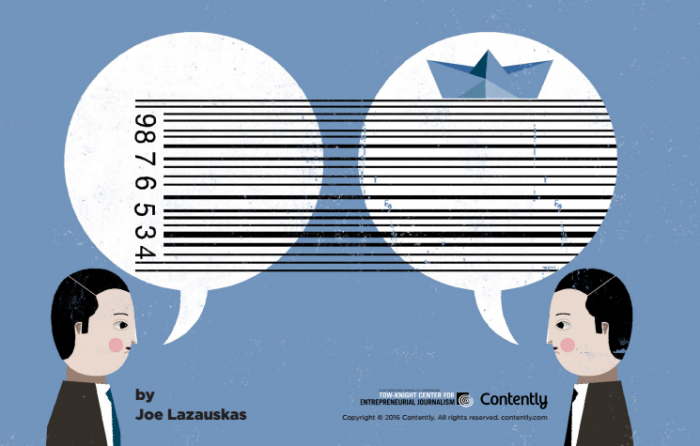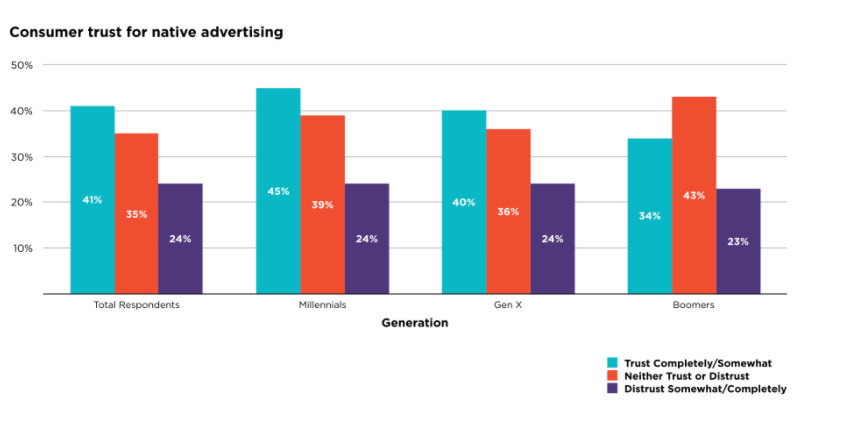
Can readers tell the difference between news stories produced by a publisher’s editorial arm and the sometimes slippery — but often lucrative — native advertising that runs on publishers’ sites?
Forty-four percent of people shown a native ad couldn’t correctly identify the company that had paid for it, according to recent findings released by the content marketing firm Contently in partnership with the Tow-Knight Center at CUNY and Radius Global Market Research. Fifty-four percent of survey participants indicated that they had felt deceived by native advertising before. And 77 percent of survey participants didn’t even identify native ads as “advertising” — describing it either as “editorial content” (34 percent!) or a hybrid (43 percent). (Contently has done similar surveys and found similar results: that people misidentify native ads as news articles).
Focus group responses shed a little light on the nature of some of the confusion:
“I think it’s an article and an ad,” said Sara, the 29-year-old focus group member, as she viewed a native ad on BuzzFeed for Google Maps. “They are clearly promoting Google Maps. They’re showing it — I don’t know what this is.”
Added Glenn, a 48-year-old focus group member, while viewing a native ad co-created between GE and Business Insider: “Well, I guess they co-created it, so I guess maybe that’s not an ad.”
The study focused on readers who came across four specific pieces of native advertising: A native ad for Wendy’s from The New York Times accessed via an in-feed Facebook ad, an ad for Ford on BuzzFeed accessed via BuzzFeed.com, an ad for Kia on The Huffington Post accessed via an in-feed Facebook ad, and an ad for GE on Business Insider accessed via the Business Insider Digital Industry Insider homepage.

Participants in the survey indicated that “Sponsored” was the most helpful label to mark something as a native ad, even more so than “advertising” (¯\_(ツ)_/¯):

The group the Contently survey found was most likely to “trust” native advertising was apparently millennials (45 percent indicating they “trust completely/somewhat”):

The study puts forth several recommendations to the FTC for how the commission could improve its guidelines on native advertising, including pushing for “sponsored” as the preferred label for native ads and requiring a publisher to include a sponsor’s name and logo when disclosing native ads on both the publisher’s own site and on social media.
You can read more about the study and some of its additional recommendations here.